L6.1 – Gradients and differential gene expression
1/26
There's no tags or description
Looks like no tags are added yet.
Name | Mastery | Learn | Test | Matching | Spaced |
|---|
No study sessions yet.
27 Terms
What are morphogens?
Secreted ligands
What do morphogens do?
They are released from a source and signal to the nucleus to drive tissue specific signalling pathways
What do extracellular morphogen gradients do?
Lead to intracellular transcription factor gradients that drive alternative transcriptomes in cells
Genes activated depend on how much external morphogen is present
How do transcription factors function at different thresholds to regulate genes?
Via a digital (OFF/ON) and/or analogue (GRADED) level to drive cells to different fates
What does analogue mean?
several different thresholds in the gradient for different genes
How do transmembrane receptors work?
Ligand signals to a cell via receptor at the cell membrane
This causes a change in the cell which activates the intracellular signalling pathway
2nd messenger causes signal transduction
TF can move to the nucleus and bind genes to regulate gene expression
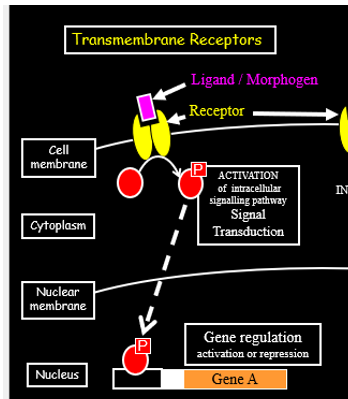
How do nuclear receptors work?
Ligands are hydrophobic so diffuse in through bilayer
Receptors in nuclear membrane or cytoplasm
Hormonal ligand binds to receptor
Turns to a TF to enter nucleus and regulate gene transcription
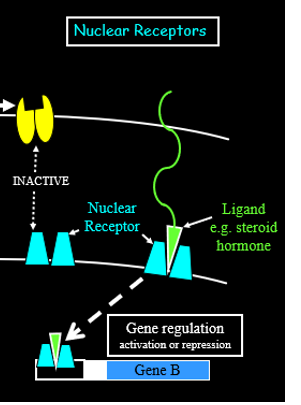
How does intrinsic (intracellular) regulation work?
mRNA is generated and translated into protein
One of the proteins is a TF
TF will regulate the expression of another gene either by increasing or decreasing transcription driven by basal machinery
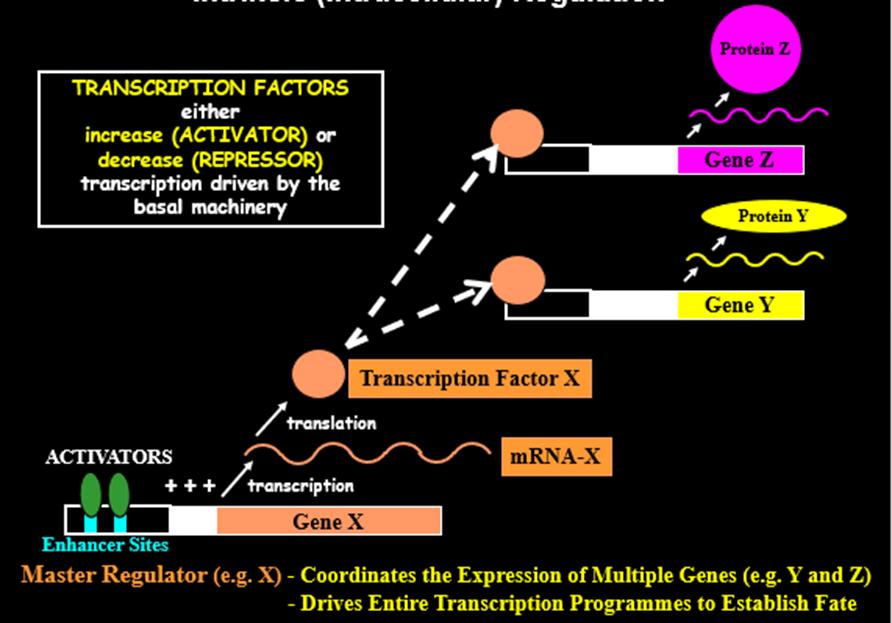
What does a master regulator do?
Coordinates the expression of multiple genes
Drives entire transcription programmes to establish fate
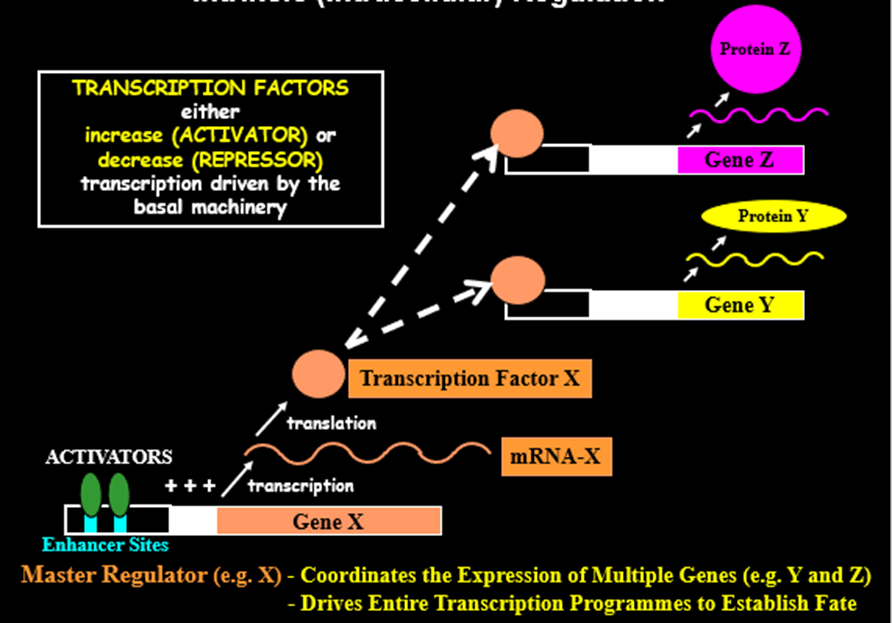
What is the general model of a transcription cascade?
A master transcription factor preferentially recognises a DNA sequence in enhancer sites
Can also bind to similar sequences that are present in other genes
Morphogens act on the MTF

What happens if the resultant proteins are TFs?
this then activates 2nd order proteins
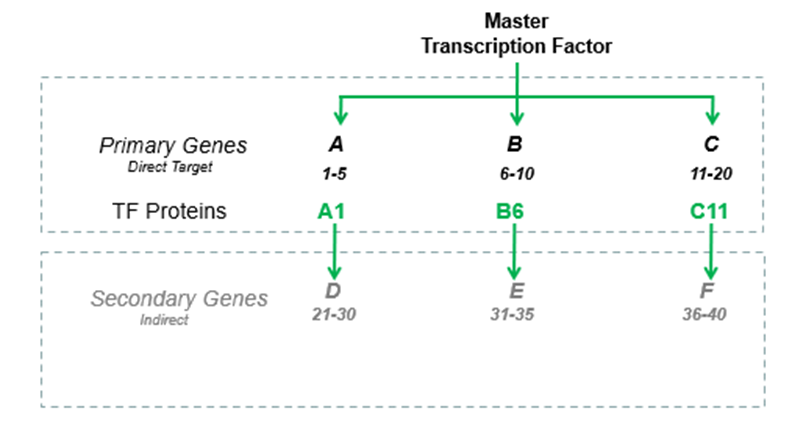
What happens if 2nd order genes are activators?
They will activate tertiary genes
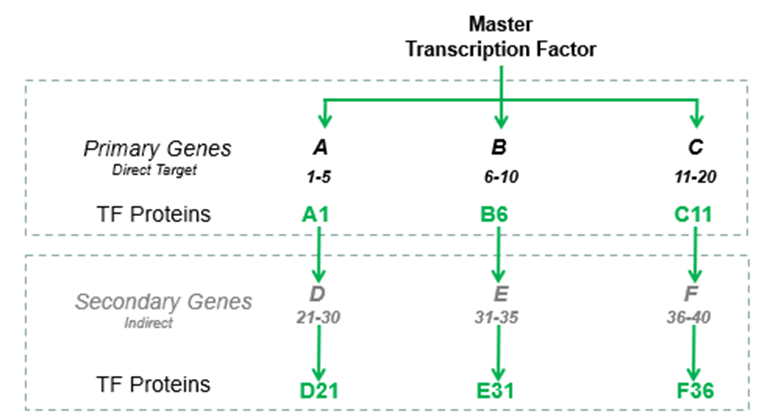
What else is generate in addition to the TF cascade?
Other genes generate non-TF proteins which are necessary for other fate specific cellular functions eg coding for skeletal proteins
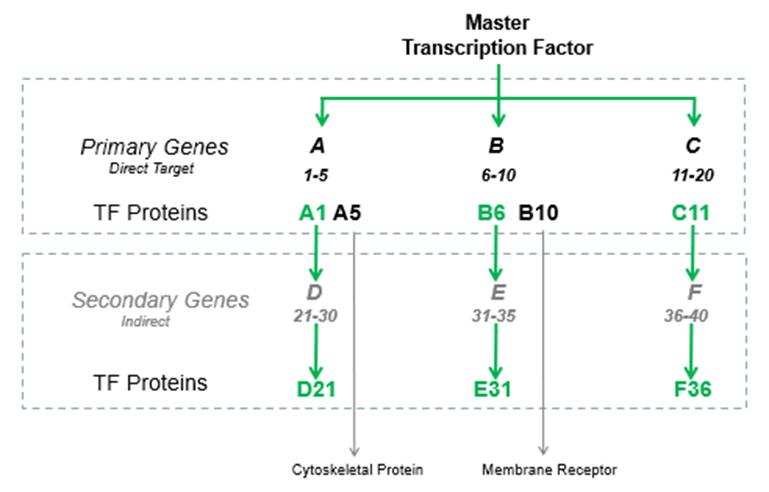
How do extrinsic signals generate gradients?
It all depends on how much extracellular morphogen the cell is receiving
There is a sheet of naive cells which all have the receptor
The morphogen source is secreted and spreads across the cells
The graded level of signal transduction factor is activated within cells
Graded level of master transcription factor generated in response
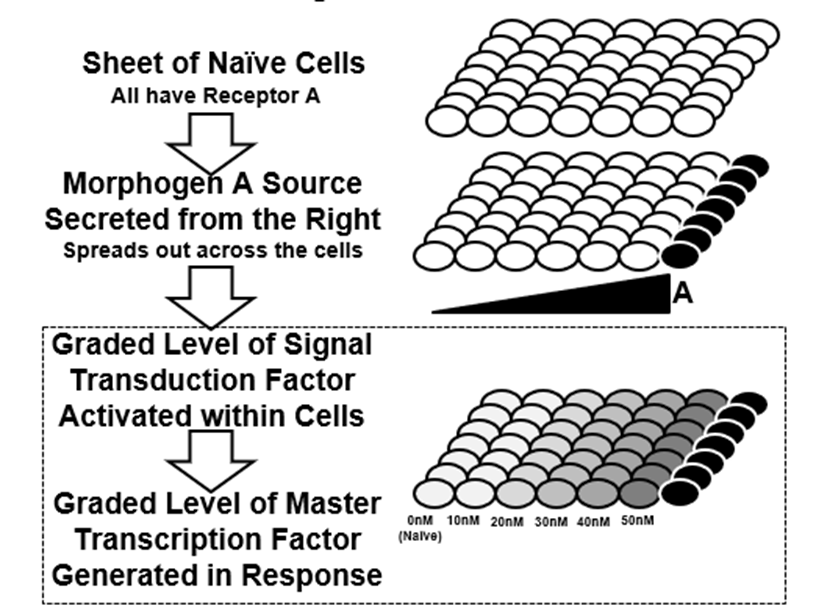
What do morphogen gradients lead to?
Corresponding intracellular gradients that drive alternative transcription cascades and cell fates
What does the intracellular concentration of a MTF directly correlate with?
The concentration of a morphogen that the cell received
Hence, cells nearest the source generate the most MTF and cells further away produce progressively lower levels of MTF
What does MTF concentration lead to?
to differential transcriptomes and alternative fates between cells
What can a single transcription factor drive?
alternative transcriptomes at different concentrations
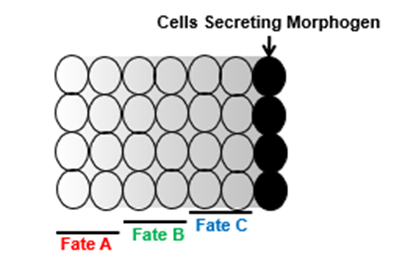
What happens if a MTF has a digital function?
It will change the cell if it is present above a threshold level
Hence, in this example 30nM of MTF can activate Gene Y to drive a transcription cascade that changes the cell fate from X to fate Y.
The neighbouring cell (left) also expresses the MTF but the level is TOO LOW to activate enough of gene Y to change fate from X to Y
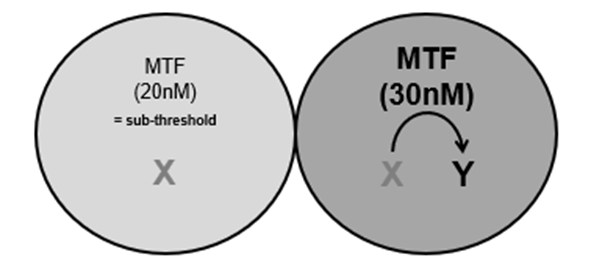
In many cases, why does the digital switch occur?
Because above a certain threshold concentration gene Y can activate (auto-regulate) its own expression
Once gene Y upregulates itself the cell now has Y-competence so the Y fate will persist even if the extrinsic morphogen and MTF activity is removed
What happens if the morphogen gradient provides an analogue signal?
Sub patterns the cells
Within endoderm cells, there can be genes to turn into other endoderm cells
A single TF from morphogen signal can be patterning cells for a broader fate or sub pattern their fate within a broader domain
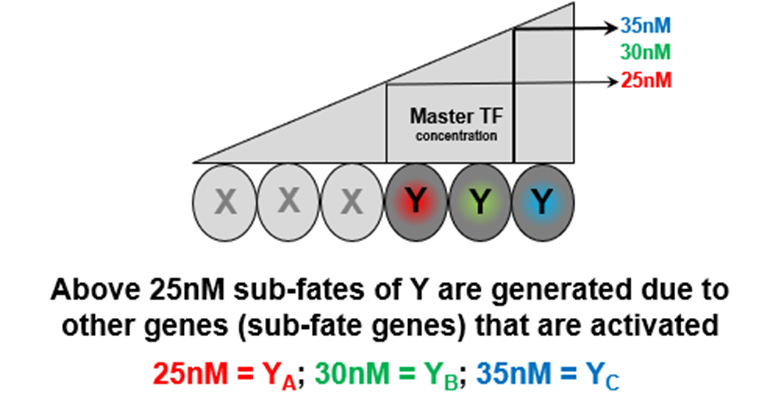
In analogue signals what happens at low concentrations?
There are only enough molecules of the MTF to bind to the biggest affinity target sites (in A genes)
Consensus sequence easiest to identify at low concentration
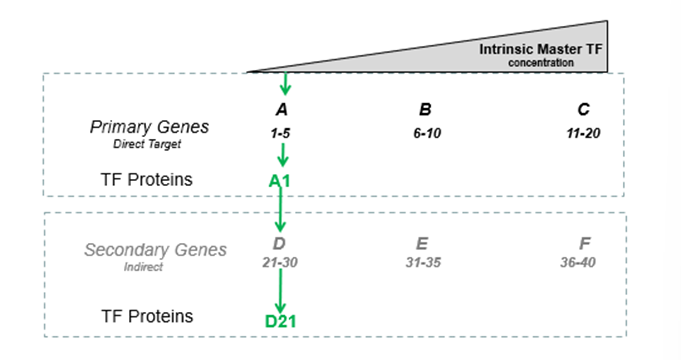
In analogue signals what happens at medium concentrations?
The excess molecules can bind to other sites
These molecules bind to the next most preferable sites
These are slightly weaker affinity target sites (in B genes)
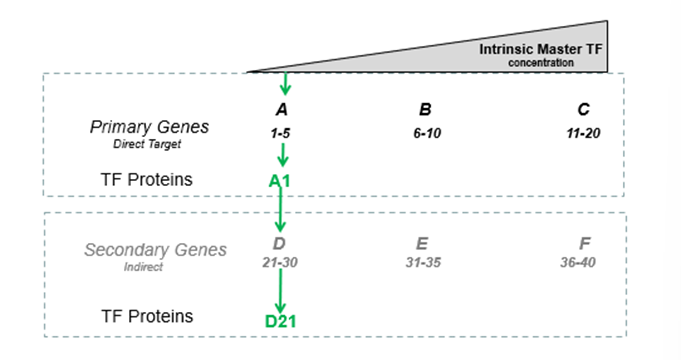
In analogue signals what happens at high concentrations?
The excess molecules can bind to further sites
The MTF now also activates the lowest affinity sites (in C genes)
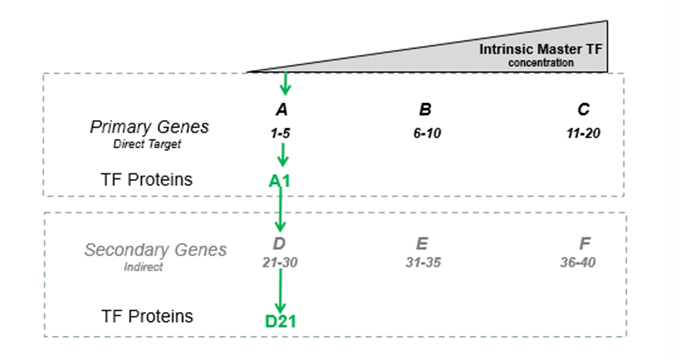
What do concentration dependent cascaded mean?
a single TF can generate multiple transcriptomes and multiple unique cell types
In many transcription cascades what does one of the lower affinity genes often code for?
A repressor of higher affinity genes
Eg if B7 is a repressor of A genes it switches the cells identify from A1/D21 to B7/B6/E31
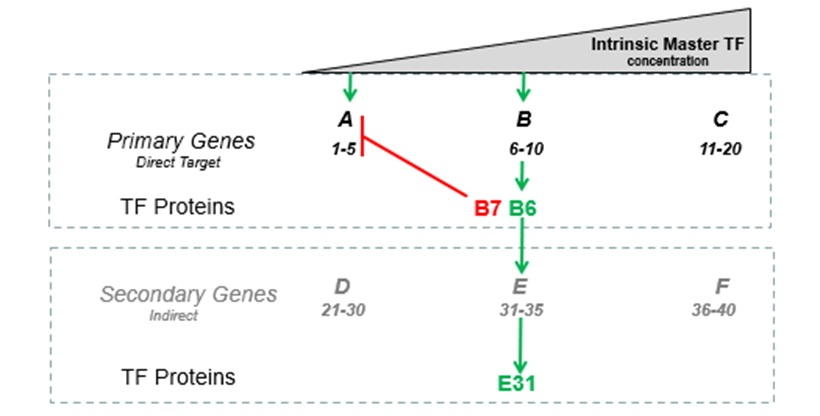
What else can the different fate of the lower affinity cell could be due to?
The expression of additional genes
For example, the highest level of transcription factor activates the C genes so these cells now have a B/C fate (i.e. B7/B6/E31/C11/F36)
Hence a single TF can generate cells with very different transcriptomes due to the alternate cascades it triggers at different concentrations
